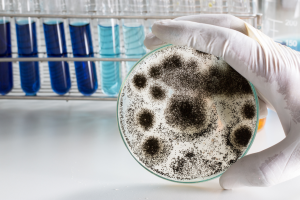 You may not always be able to see mold in your commercial building, but its effects usually don’t go unnoticed — like your employees sneezing, coughing, or wheezing. These symptoms can also come from dust or changing seasons, but if they don’t go away, it could mean your commercial building is infested with mold.
You may not always be able to see mold in your commercial building, but its effects usually don’t go unnoticed — like your employees sneezing, coughing, or wheezing. These symptoms can also come from dust or changing seasons, but if they don’t go away, it could mean your commercial building is infested with mold.
A professional mold test is one of the best ways to confirm the existence of mold in a building. Are you wondering what this process entails? This professional mold removal contractor in Glenview, Illinois is going to explain below.
Visual inspection
The contractor first takes a good look at every room in your building. Their trained eyes (and noses) can spot any visible signs of mold (discoloration on walls or moisture damage) or that musty odor.
They always pay attention to areas near water sources that can be hotspots for mold growth, like pipes and sinks. If there are any signs of leaks or excess moisture that could foster mold growth, they will find it.
But if this visual inspection does not clearly show any signs of mold, they will run more advanced tests to find hidden mold. Being thorough is essential when your building’s safety is on the line.
Mold sampling
Mold sampling is done to find hidden mold that was not identified during the visual inspection. Once your contractor suspects a mold presence, they collect samples from around your building for lab testing. With these tests, they want to identify the mold type and its toxicity level.
Air sampling is the most common method professional mold removal contractors in Glenview, Illinois use. It compares samples of air from inside the building with the air outside — and if there are more mold spores inside than out, that confirms the existence of hidden mold.
Identification and analysis
In the lab, your contractor will examine those samples to find the exact type of mold in your building and how widespread and dangerous of a problem it is.
This step is crucial because it helps the professional determine the best remediation strategy. Different molds need different approaches, and your contractor wants to ensure they choose the right one to keep your building safe.
Reporting
After all the lab tests are complete, your contractor will give you a detailed report of what they found — including the types of mold, spore levels, and even photos of the moldy areas. They will also walk you through the report, explain everything, and give final recommendations for mold removal.
These reports are essential for ensuring the most accurate and effective mold remediation work that also follows regional health and safety standards.
Clearance and post-remediation testing
Once your contractor has dealt with the mold, they do another test — checking moisture levels in the previously affected materials and a visual inspection to make sure the remediation was successful. This last test ensures that the remediated areas are truly mold-free and safe.
Here’s why you should consider professional mold testing
Mold spores can be extremely dangerous, especially when they become airborne. In short, they can cause health issues that are best avoided.
Professional mold removal contractors in Glenview, Illinois have the training, knowledge, tools and experience to find and fix mold problems — even the hidden ones. They also know the science behind mold growth and can tackle it effectively, making sure your building remains a safe and healthy environment for all its occupants.
Looking for a Professional Mold Removal Contractor in Glenview, Illinois?
Do you have a suspicion that your commercial building contains mold? Ready to schedule an inspection with a professional mold removal contractor in Glenview, Illinois? If so, Axis Response Group is the top choice. Our team can thoroughly inspect your property, find any areas with mold growth, and help you make sure it does not come back.
Contact us today at (773) 427-6811 to get started.

0 Comments